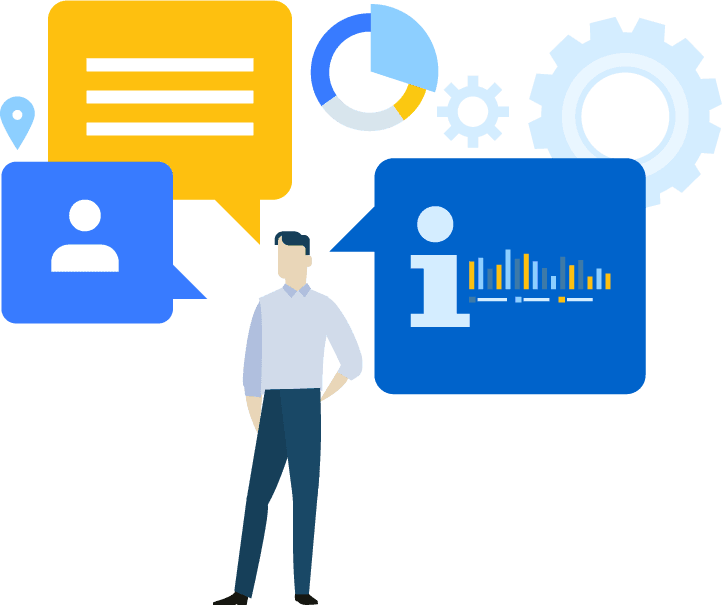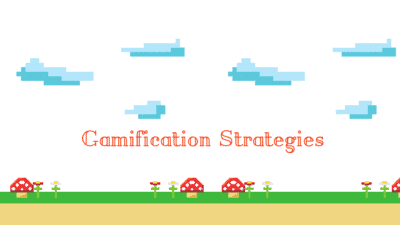The Basics of Intent-based Marketing

Intent-based marketing has become a big thing in the marketing world, and for a good reason. It brings results. Changes in the the buyer’s journey make it tough for marketers to target the right prospects and define what motivates them. Intent-based marketing helps businesses predict purchase intent through an in-depth analysis of user behavior.
What is intent-based marketing?
With the ever-rising expectations across the buyer’s journey, understanding your audience is critical. It’s also key to serving them the right content at the right time. The intent-based approach involves marketing a product or a service based on the prospect’s intent to make a purchase decision, demonstrated by their actions and behavior.
This is especially true when it comes to B2B and selling high-ticket items to powerful decision makers. In essence, in a B2B tech scenario, you are most often targeting a group of “decision makers” also known in SiriusDecisions terminology as the “Demand Unit.” While the business as a whole is your “customer” from an accounting perspective, from a marketing perspective it’s a bit different.
A business doesn’t make the decision to purchase. Individuals inside that organization do, and they are the decision makers. So for most intents and purposes, you can treat decision makers as your target when it comes to attracting their intention and creating purchase intent. They are the ones going through the customer’s journey, and the customer to whom you are targeting.
And when it comes to this, marketers will typically use browsing behavior to fine tune their targeting strategies. But even with great volumes of data, results often fall short of projections. This is because targeting based solely on demographics and past behavior isn’t effective enough.

Granted, you still need this data so you can create a customer profile for your brand. And by default, well-defined audiences do reveal some intent. However, you can’t be sure where your targets are in the buyer’s journey at the moment. Your timing may be off. They may simply be browsing, with no actual intent to purchase.
Intent-based marketing introduces the time factor in the equation.
It still incorporates past behavior. But it doesn’t rely solely on it. If a prospect has shown interest in a certain product and they revisit your site, it may indicate sustained interest.
So, you logically make a recommendation based on their past searches. But what if their needs have shifted since? What do they (or rather their business) need at the moment? Is your prospect browsing because their business is ready to make a purchase? Or are they just researching a topic? To answer this, you need to know their actual intent.
What do we mean by intent?
Intent is information about a person’s reasons for visiting, based on their behavior and activity online. To determine intent, you need to look into topic and context data.
Topic is the subject of interest that brings people to a particular website. So, topic data contains information about people’s interest in a topic you are offering. But, interest alone isn’t a sufficient indicator of purchase intent, which leads us to context.
Context data provides insight into the nature of a person’s interest in the topic. For example, they can be interested in your product and contemplating giving your sales team a call. They can also be industry experts doing research for a paper on the topic.
Context data can provide general firmographic info, such as the company the visitor works for and their function. It can also reveal more personal insights, like whether they have expertise relevant to your offer, whether they are a buyer or an influencer, etc.
Without context, you can misread a person’s behavioral signals and assume something that isn’t there, such as deep interest.
As a result, you could assign valuable resources on an industry writer that has no intention of buying.
Surge data is another key element in recognizing intent. It tells you which businesses are actively browsing your products. It also reveals other intent signals, such as what content people want to receive from you and when. A topic “surge” from a specific account indicates that several of its decision makers are searching for services like yours.
As a marketer, it’s your job to discern people’s reasons for visiting and their needs at that moment. The key is to recognize real purchase intent and distinguish it from interest. You don’t want to alienate people by bombarding them with irrelevant recommendations.
By tracking and analyzing intent, you’ll be able to tell where people are in the buyer’s journey. But this doesn’t necessarily mean deploying the right ad and hoping for a sale. It’s about reacting in a way that matches people’s needs wherever they are in the sales process. It’s about providing a highly personalized experience based on real needs.
Even if it doesn’t lead to a sale, this approach will trigger a positive user response and brand association.

What type of intent data should you focus on?
To predict intent, you should track and analyze time-sensitive, individual behavioral data.
The first category includes individual activity data. This data provides insight into visitor interactions with the website and their unique actions. Are they returning visitors or first-timers? Which pages are they viewing? Which campaign brought them here? This is important stuff you should know so you can respond at the moment.
Deep behavioral data is the second and most important category. The in-depth behavioral tracking of each site visitor provides invaluable specifics about user actions. Page scrolls, dwell time, hovers and clicks. Deep data is key to understanding people’s true interests and intent at the moment. Take dwell time for example. Long dwell time shows active engagement. Short dwell time shows that the visitor probably landed on your page by mistake.
Ways B2B marketers can use intent data to drive sales
Intent-based marketing allows you to focus your marketing and sales efforts on specific goals. Instead of casting wide nets, you concentrate your resources only on prospects with a high chance of conversion.
In B2B, sales cycles can easily take a year and often depend on multiple players. In this setting, an intent-driven marketing approach is crucial for detecting active demand. It helps you understand what motivates each stakeholder in the target company. This, in turn, makes it possible to engage each of them with relevant content, ensuring their buy-in.
Intent-based marketing reduces the overall campaign cost and boosts ROI. This is because your prospects are already past the awareness stage and approaching contemplation or decision. So, you basically skip the initial steps of the buyer’s journey.
Intent-based marketing allows you to define your ideal personas.
By analyzing the client’s past behavior, you can find out what motivates their decisions. This way, you can determine which intent signals belong to quality leads.
Let’s say your existing customers tend to engage with your educational content early on in the journey. If so, consider creating nurturing campaigns for prospects that download your eBooks and white papers.
With the multitude of digital channels and devices that people use today, choosing the right deployment media can be tough. Intent data can help you determine which media can reach your audience most effectively.

The concept of intent-based marketing is especially applicable to inbound strategies like SEO. Every time a prospect searches for something, it shows intent. The more specific the keyword, the stronger the intent signal. E.g., long-tail keywords like “lead generation for tech companies” reveal a lot about a person’s intent.
To devise an intent-driven strategy, you need to track and analyze people’s responses to your brand messaging. This way, you can optimize your customer communication and create targeted nurture campaigns. You can also determine which stage of the journey your prospects are in. Use intent data to prioritize your audience based on engagement. Give the best attention to your most active prospects. The more targeted the content, the faster the conversion.
An intent-based marketing approach confers a strong competitive advantage in B2B sales. By leveraging intent data and signals, you can nurture your leads with content that matches their needs. DemandZEN can help you streamline your marketing efforts so you can focus your resources on the right accounts. We can help you create demand and fill your sales funnel with quality leads.
Call DemandZEN today and let us can create the perfect marketing mix for your business.
You Might Also Enjoy These Posts
Demand Generation vs Lead Generation
Gamification Strategies: Badges in B2B Marketing
Welcome To DemandZEN
DemandZEN specializes in Account-Based Demand Generation and solving the challenges around finding, engaging and converting target accounts into real opportunities for B2B Technology and Services companies.


